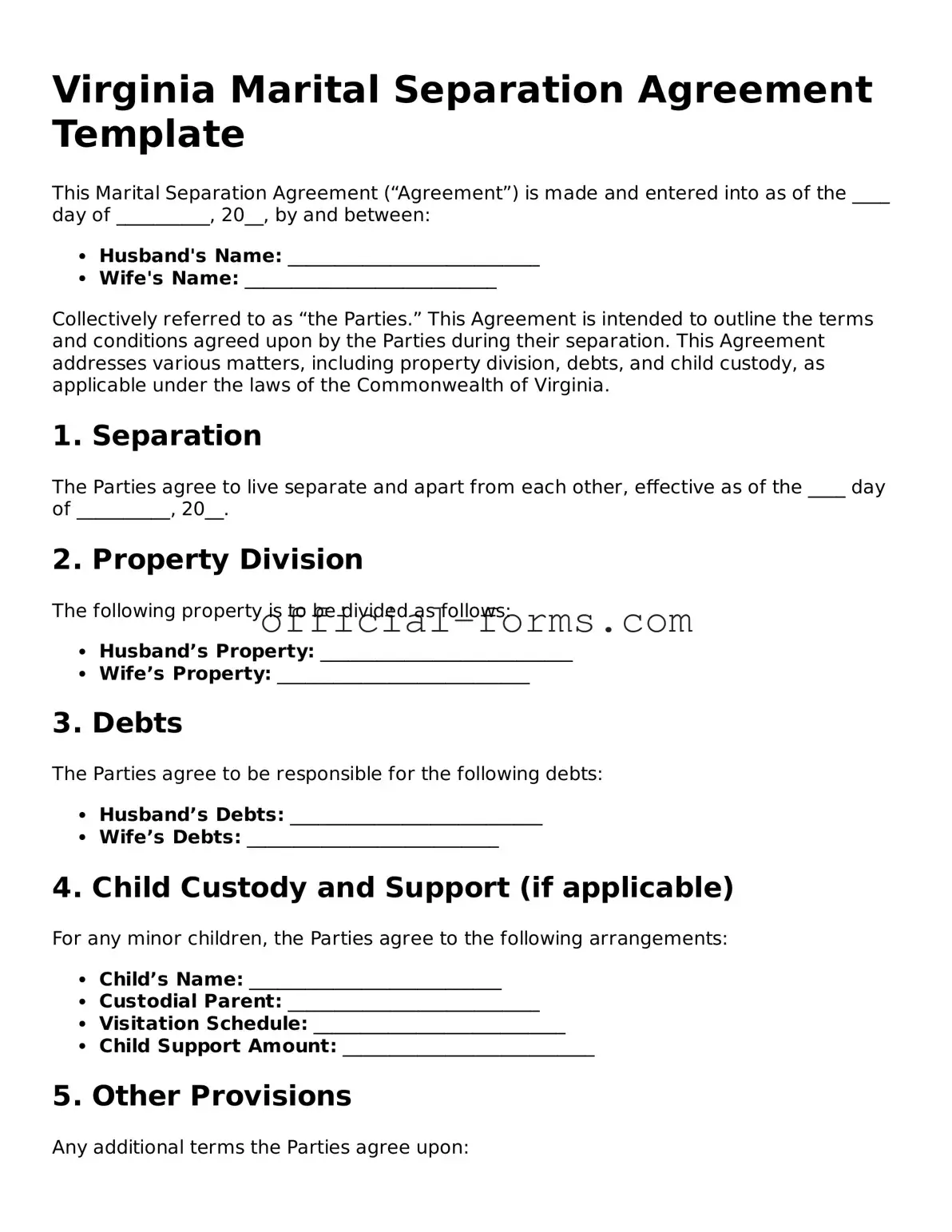Filling out the Virginia Marital Separation Agreement form can be a complex task. One common mistake is failing to include all necessary personal information. This includes the full names of both parties, their addresses, and the date of marriage. Omitting any of this information can lead to delays in processing the agreement.
Another frequent error is not clearly defining the terms of separation. Vague language can create confusion later on. It is important to specify details such as custody arrangements, division of property, and financial responsibilities. Clear definitions help prevent misunderstandings between both parties.
Many individuals neglect to consider tax implications when filling out the agreement. For instance, the division of assets may affect tax liabilities. It is advisable to consult with a financial advisor to understand the potential consequences of the agreement.
People often overlook the importance of having the agreement notarized. A notarized document carries more weight in legal situations. Notarization can help verify the identities of both parties and ensure that they are signing the document willingly.
Some individuals fail to discuss the agreement thoroughly with their spouse before submission. This can lead to disputes down the line. Open communication is crucial to ensure that both parties are in agreement about the terms outlined in the document.
Another mistake is not reviewing the agreement for accuracy. Typos or incorrect information can render the document invalid. It is essential to double-check all entries to ensure that everything is correct before finalizing the form.
Lastly, individuals sometimes forget to keep copies of the signed agreement. Retaining a copy is important for personal records and future reference. Both parties should have access to the document in case any questions arise later.
